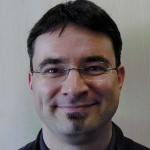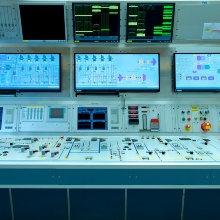The Stuttgart environment traditionally had ties to aviation. Already before 1955, thanks to team work by state government and industry, three research facilities came into being: The German Interdisciplinary Helicopter Research Institute (1953), the Graf Zeppelin Research and Working Group (1954), and the Institute for Jet Propulsion (1954), which then developed into today’s Stuttgart-based German Aerospace (DLR) Research Center.
In early 1948, Ulrich Senger, who subsequently founded the Institute of Aeronautical Propulsion Systems (ILA), was full professor of heat convection engineering and director of the engineering laboratory. The engineering labs at the technical universities were key research and testing facilities that carried out materials research, component testing, and research on complete machinery assemblies.
Planning the first altitude test stands
While active as director and chief engineer with BBC in Mannheim, besides working on steam turbines, Ulrich Senger had also worked with stationary gas turbines and turbo compressors. He was consulting expert and advisor for the development of aircraft turbo jet engines during the Second World War, and in that capacity oversaw the development of one the first altitude test stands (1943-1944).
In 1945, this altitude test stand was shipped to the USA and became the first test facility at what is today the Arnold Engineering Development Complex (AEDC) Research Center in Tullahoma, Tennessee. This research center, founded in 1951, is today the largest aerospace research centers in the world.
In a text commemorating 125 years of Stuttgart Technical University in 1954, Ulrich Senger wrote: “As part of the aeronautical research program at Stuttgart Technical University, we are planning to set up a gas turbine and jet engine research institute linked to the engineering laboratory and using some of its premises and facilities. Among other testing activities, here we will investigate turbine and supercharger blading, complete gas turbine groups. with and without cooling, as well as heat exchangers for gas turbines.”
1955: Founding of the Institute for Aircraft Turbo Engines
When the Allies in 1955 lifted the prohibition on aeronautical research by the Federal Republic, Ulrich Senger founded the Institute for Aircraft Turbo Engines with the mission described by him and housed in the engineering lab. The aeronautical engineering department in Stuttgart Technical University’ engineering faculty, together with the Institute for Aerodynamics and Gasdynamics and the Institute of Aircraft Design, resumed work.
During the 1960s, Ulrich Senger planned and supervised the relocation of his two institutes and engineering lab to Vaihingen at the Pfaffenwaldring 6 address. He conceived the altitude test stand for aircraft turbo engines that was inaugurated in 1964. In 1968, Ulrich Senger became professor emeritus; however, he continued to direct his institutes for the time being.
1970 to 1973: Renamed as the Institute of Aeronautical Propulsion Systems
From 1970 to 1973, Rolf D. Bühler, the founder of the Institute of Aerospace Propulsion, was director of the Institute for Aircraft Turbo Engines with its altitude test stand. During this period, the Institute received its current name of “Institute for Aeronautical Propulsion Systems.” In 1973, Wolfgang Braig took up the reins of the Institute. He had worked under Ulrich Senger in the group that designed the altitude test stand. The Institute meanwhile continued to grow and it acquired a second test hangar.
An altitude test stand in international demand
German firms, such as MTU and Rolls-Royce Germany, and international manufacturers have their jet engines and engine parts tested in the high-performance test stand. Research has led to development of methods for calculating operating characteristics of compressors and turbines as well as entire turbo engines that also apply to stationary gas turbines. A special research area is dedicated to studying air-breathing combination propulsion systems for launching the space shuttles of the future.
Additional test areas were:
- Fluid mechanics measurement device with laser
- Experiments in the water tank for visualizing turbine fluid mechanics
- Methods for computing fluid mechanics in turbines to capture secondary flows and cooling air exhaust
A special Low Mach Number Test Installation was designed for analyzing the turbines of large engines either at actual size or scaled down for less energy use and lower cost.
2001: Stephan Staudacher directs the Institute
In 2001, Stephan Staudacher took over direction of the Institute. Many of the previous research subjects have been pursued since then. Added to them are:
- Development of small gas turbines
- Engine controls and complex engine installations
- Studies of manufacturing processes and the logistics of aircraft engines
Under this leadership, another test hangar commenced operation, which enables a larger air supply for the large test stand installation and provides space for research into small gas turbines.
Diverse cooperations and an endowed professorship
In the years after 2010, research and teaching at the Institute also benefited from collaboration with partner institutions from science and business. Both basic research and specific enhancement to propulsion systems and turbines enjoy an international reputation thanks in large part to the continually improved physical plant.
Since January 2016, the research area structural mechanics receives special emphasis, with a professorship endowed by MTU AeroEngines. Prof. Dr.-Ing. Malte Krack's research focus is on nonlinear vibrations.
Contact

Christian Koch
Dr.-Ing.Manager Altitude Test Facility, Academic advisor, deputy head of the institute







